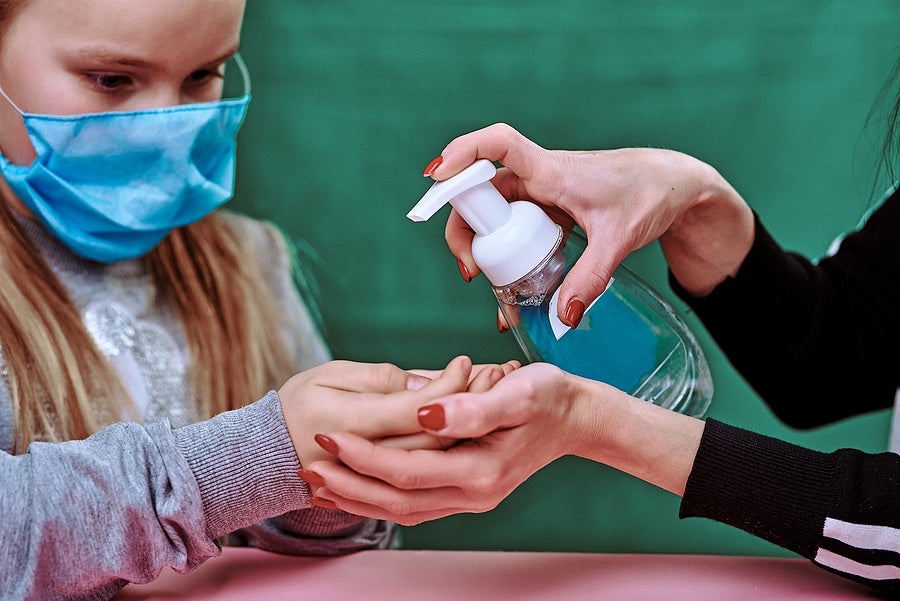The political debate over reopening schools has brought children’s health to the forefront of the nation’s coronavirus crisis, often in ways contrary to expectations. Conservative leaders, pushing for in-person instruction, are citing the social-emotional needs of children stuck at home for months. Liberal leaders, urging caution, are calling for local control of schools.
From a medical point of view, experts are weighing in on the side for bringing students back to the classroom this fall, if it can be done safely. The American Academy of Pediatrics’ (AAP) guidance for school re-entry outlines key principles under the over-arching goal of having students physically present in school.
The guidance emphasizes the importance of schools in many aspects of children’s lives:
Schools are fundamental to child and adolescent development and well-being and provide our children and adolescents with academic instruction, social and emotional skills, safety, reliable nutrition, physical/speech and mental health therapy, and opportunities for physical activity, among other benefits. Beyond supporting the educational development of children and adolescents, schools play a critical role in addressing racial and social inequity.
The organization found itself pulled into the political conversation, with President Donald Trump and U.S. Secretary of Education Betsy DeVos inaccurately citing its guidance in their push for in-person instruction. Both Trump and DeVos suggested that schools should lose federal funding if they didn’t reopen fully in the fall. But the AAP’s guidance is more nuanced than that – the guidance stresses the importance of developing flexible school re-opening strategies in concert with state and local public health officials and with special considerations and accommodations for students with special health care needs or disabilities.
The AAP followed up with a joint statement released with national teachers unions and the School Superintendents Association that once again stressed the need for safely reopening schools. “We should leave it to health experts to tell us when the time is best to open up school buildings, and listen to educators and administrators to shape how we do it.”
Beyond student health, teachers and administrators naturally worry what reopening schools will mean for their own well-being. And parents seem increasingly concerned about the prospects: a poll released this week found that 71 percent of parents consider sending their child to school in the fall a large or moderate risk. The rate rose to 89 percent among Black parents.
Several of the nation’s largest school districts—including Los Angeles and San Diego, California and Prince George’s County, Maryland—have already announced they will start the school year with classes on line.
As the political debate wears on, states have spent the past few weeks developing detailed guidance of just how to reopen schools. Most follow suggestions from the Centers for Disease Control and Prevention on everything from handwashing to school bus capacity. In nearly all cases, the state guidance comes in the form of recommendations, leaving the tough decisions of balancing the needs of students, parents, and teachers up to the local school districts.
FutureEd, another think tank at Georgetown’s McCourt School of Public Policy, has analyzed what states have submitted so far and identified some trends that affect children’s health, including:
- Creating physical distance: With the CDC recommending six feet of space between students, some states are setting limits for the number of people in classrooms; Virginia puts the number at 10, while North Dakota sets it at 15. Colorado and other states advise assigned seating with desks facing forward. Georgia suggests using gyms, auditoriums and outdoor spaces to further allow students to spread out. Because of space limitations, many states recommending half-day, one-day, two-day or weekly rotations for students and staggered start times.
- Wearing face masks: State guidance on wearing face coverings reflects the political divide nationwide. Places with COVID-19 outbreaks early on—New York, Ne
w Jersey, Washington state, among them—call on school districts to require face Most others recommend the use of masks, except for young children. Florida advises using them, but counsels districts not to issue mandates. And in Georgia, where Gov. Brian Kemp has just blocked local jurisdictions from imposing mask requirements, the guidance calls for allowing students to bring masks from home.
- Taking temperatures: This aspect of school health engenders some of the biggest variation among states. Illinois and North Carolina require schools to check temperatures as students and staff every day as they enter the building. Arkansas and California suggest instructing parents to conduct symptom screens before sending their children to school in the morning. Massachusetts and Pennsylvania, caution against temperature checks altogether, citing false positives.
Health and education leaders are urging policymakers at the local, state and federal levels to strive to mitigate risks as much as possible while acknowledging that reopening schools safely is going to be difficult and costly. As they wrote in the joint statement: “The pandemic has reminded so many what we have long understood: that educators are invaluable in children’s lives and that attending school in person offers children a wide array of health and educational benefits. For our country to truly value children, elected leaders must come together to appropriately support schools in safely returning students to the classroom and reopening schools.”



